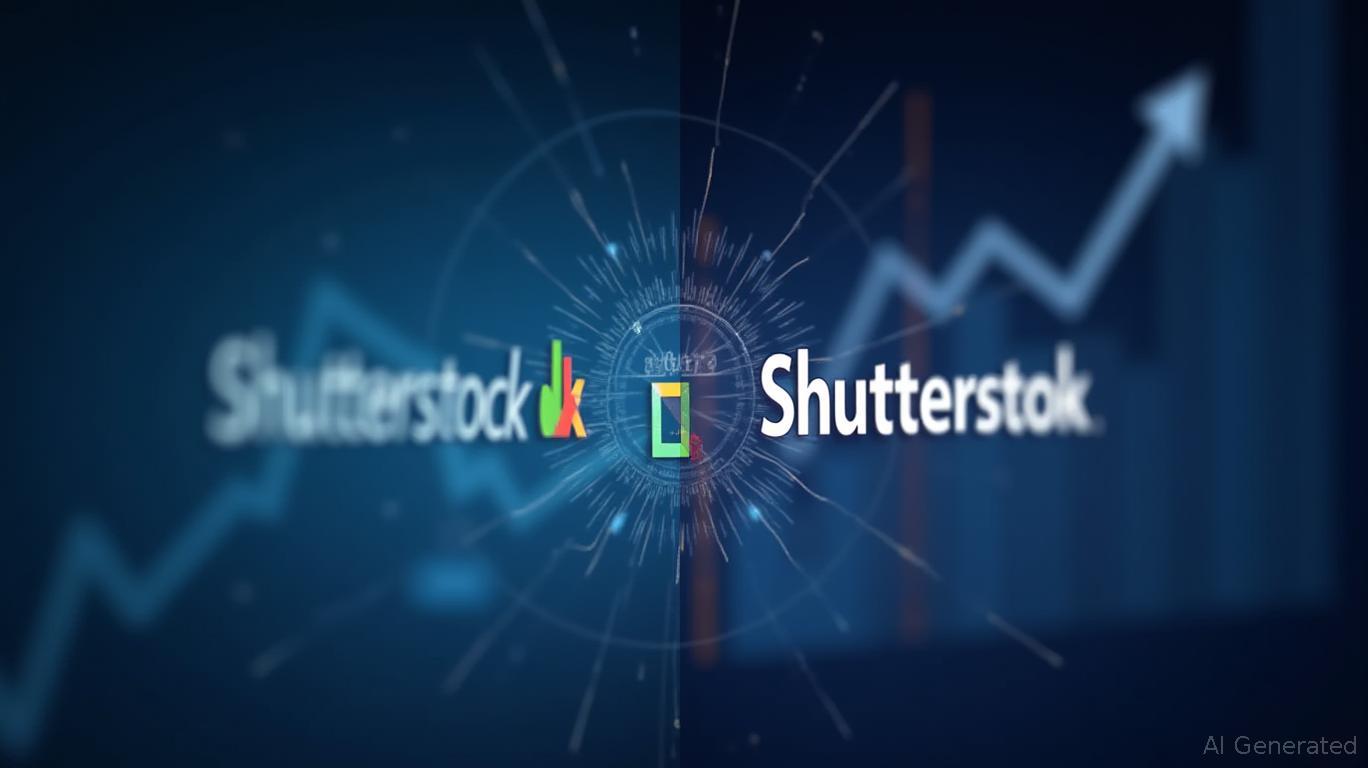Getty-Shutterstock Merger: Navigating Regulatory Hurdles to Unlock Synergies
The merger between
and Getty Images, announced in January 2025 and approved by Shutterstock shareholders in June, marks a pivotal moment in the visual content industry. The $3.7 billion deal aims to create a dominant player through synergies in content, technology, and cost efficiencies. However, regulatory scrutiny and integration challenges loom large. This analysis explores whether the strategic benefits outweigh the risks for investors.
Regulatory Risks: A High-Stakes Hurdle
The merger faces a critical obstacle in the form of U.S. antitrust scrutiny. On April 2, 2025, the U.S. Department of Justice (DOJ) issued a Second Request under the Hart-Scott-Rodino Act, requiring the companies to provide additional documents and data. This is a standard but time-consuming step that often delays mergers by months.
The DOJ's concern likely centers on potential market dominance. Combined, the firms control over 40% of the stock photo market, with Shutterstock's diverse content library (3D, video, music) and Getty's strength in editorial and event coverage. Antitrust regulators may demand divestitures or operational changes to preserve competition.
Investors should note:
- A worst-case scenario—a merger blocked or significantly altered—could see Shutterstock's stock drop sharply.
- A best-case scenario—approval with minor conditions—would unlock the synergies the companies tout.
The graph would show Shutterstock's stock volatility post-merger announcement, while Getty's stock has trended upward, reflecting market optimism despite regulatory risks.
Strategic Synergy Potential: A Blueprint for Dominance
The merger's success hinges on realizing $150–200 million in annual cost synergies by year three. Here's how:
1. Operational Efficiency: Overlapping functions like marketing, IT, and customer support could be streamlined.
2. Content Aggregation: Combining their libraries creates a one-stop shop for clients, reducing the need to source from multiple vendors.
3. Tech Innovation:
- Getty's event coverage (160,000+ annual events) pairs with Shutterstock's AI-driven tools (e.g., generative AI for custom imagery).
- 3D content and advanced search algorithms could differentiate the merged entity in a crowded market.
Financial metrics bolster the case:
- Pro forma revenue of $1.98 billion (46% from subscriptions) suggests a recurring revenue stream.
- Debt deleveraging aims to reduce borrowing costs, freeing capital for innovation.
Investment Considerations
For Bulls:
- The merger's 5-year accretion timeline is conservative, implying upside if synergies exceed $200 million.
- A combined enterprise with 3.0x net leverage (based on 2024 EBITDA) is financially stable.
For Bears:
- Regulatory delays could push closing into 2026, prolonging uncertainty.
- Integration risks—such as retaining contributors and maintaining service quality—are non-trivial.
Recommendation
The merger is a high-risk, high-reward bet for long-term investors. Key catalysts to watch:
1. Regulatory Approval: A DOJ decision by late 2025 would remove the overhang.
2. Synergy Execution: Early wins in cost savings or product launches could validate the deal's value.
Action Items:
- Hold: For risk-averse investors until regulatory clarity emerges.
- Buy: On dips if the merger closes by year-end, with a target price reflecting synergies.
Conclusion
The Getty-Shutterstock merger embodies a classic trade-off: short-term regulatory risk versus long-term industry dominance. While antitrust hurdles remain a wild card, the strategic rationale—scale, content breadth, and tech leadership—is compelling. Investors should prioritize the merger's progress closely, but those with a multi-year horizon may find this a transformative opportunity in the visual content space.
Final thought: In a market hungry for innovation, the merged entity could redefine how businesses and creators access visual content—provided it survives regulatory scrutiny.

Comments
No comments yet